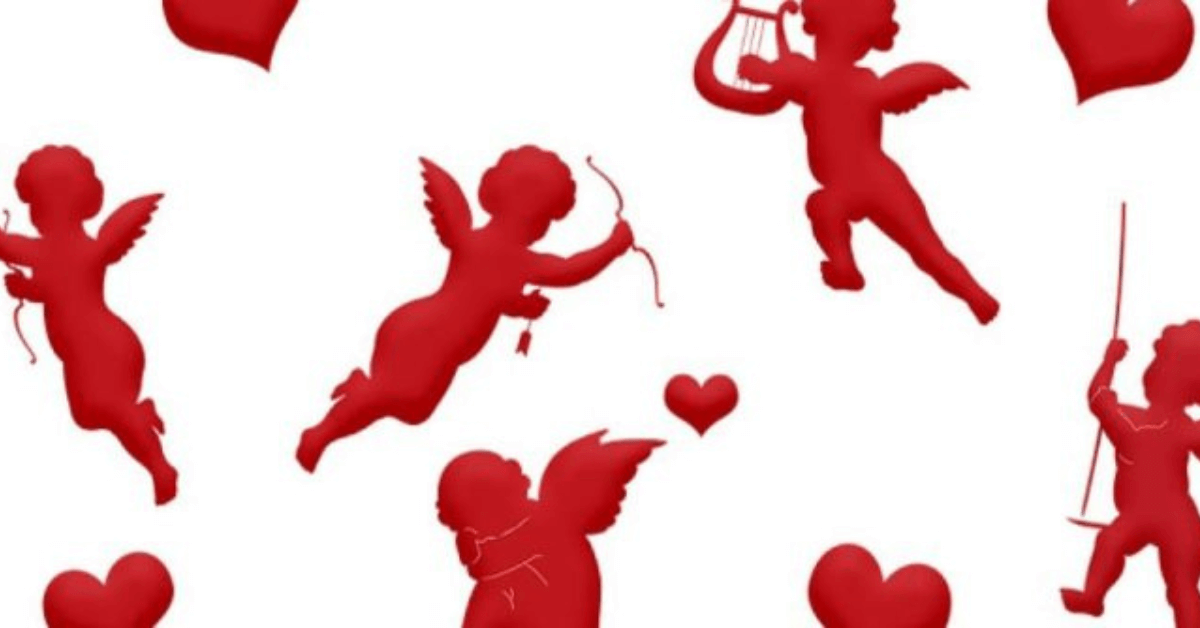Valentine’s Day, a celebration of love and affection, is adorned with various symbols that encapsulate sentiments of romance, devotion, and admiration. These cherished symbols, from classic roses to iconic Cupid, carry profound meanings that add depth and emotion to this beloved occasion.
You May Also Like: The Link Between Valentine’s Day and Ancient Festivals
Roses: The Emblem of Love
Roses, particularly red ones, reign as the quintessential symbol of love on Valentine’s Day. Each hue of rose conveys distinct emotions—red signifies passionate love, pink embodies gratitude and admiration, while yellow conveys friendship and joy. The velvety petals of roses have long represented beauty, romance, and enduring affection.
Cupid: The Cherubic Messenger
Cupid, the mischievous and cherubic figure from Roman mythology, is synonymous with love and desire. Often depicted as a winged archer armed with arrows, Cupid’s aim is believed to ignite feelings of love and passion in the hearts of those struck by his enchanted arrows.
Hearts: The Universal Symbol of Affection
Heart-shaped symbols, prevalent during Valentine’s Day, symbolize love, compassion, and emotional connection. Whether depicted on cards, chocolates, or gifts, the iconic heart shape represents the essence of affection and romantic attachment.
Doves: Symbols of Peace and Fidelity
Doves, recognized for their gentle nature and devotion to their mates, symbolize peace, purity, and enduring love. Their appearance in Valentine’s Day imagery signifies harmony, fidelity, and the tranquility found in strong relationships.
Chocolate: Sweet Indulgences of Romance
Chocolate, a delightful treat enjoyed fervently on Valentine’s Day, holds a symbolic connection with romance and affection. Beyond its delectable taste, it symbolizes sweetness, intimacy, and acts as a gesture of love and devotion.
Lovebirds: Representing Romantic Partners
Lovebirds, as the name suggests, symbolize romantic partners deeply in love. Their joyful and affectionate nature mirrors the harmony and companionship shared between couples, reflecting the essence of Valentine’s Day.
Lace and Ribbons: Ornamental Signifiers
In vintage Valentine’s Day traditions, lace and ribbons adorned cards and gifts, adding a touch of elegance and delicacy. Symbolically, they represent ties that bind, weaving sentiments of love and commitment.
Love Knots: Eternal Bonds
Love knots, intricate and intertwined designs, symbolize everlasting love and unity. They depict an unbreakable bond between two hearts, entwined in a timeless connection.
Keys and Locks: Uniting Hearts
Historically, gifting keys or lock-shaped items symbolized unlocking one’s heart or securing a promise of love and fidelity. This symbol represents trust, commitment, and the shared journey of two hearts bound together.
Love Notes: Expressions of Affection
Handwritten love notes or letters hold immense sentimental value on Valentine’s Day. They symbolize heartfelt expressions of love, cherished sentiments, and the timeless tradition of conveying emotions through written words.
Cherries: Tokens of Sweetness
Cherries, often associated with love and desire, symbolize sweetness and romantic allure. Their red hue and succulent nature evoke feelings of passion and allure in the celebration of love.
Arrows: Love-struck Symbolism
Arrows, reminiscent of Cupid’s quiver, signify the force that ignites love. They represent the unexpected nature of love, striking hearts and fostering affectionate connections.
Eros: The Greek God of Love
Eros, the Greek counterpart of Cupid, embodies passionate love and desire. Depicted as a handsome youth armed with bow and arrows, Eros symbolizes the intense emotions associated with romantic love.
Flowers Beyond Roses: Symbolic Meanings
While roses dominate Valentine’s Day, other flowers carry their own symbolic meanings. For instance, tulips signify perfect love, daisies represent innocence and purity, and orchids convey love, luxury, and strength.
Engagement Rings: Symbolizing Eternal Commitment
The tradition of presenting engagement rings on Valentine’s Day symbolizes enduring commitment and the promise of a lifelong partnership. Rings, especially adorned with diamonds, represent eternal love and devotion.
Unity Candles: Symbol of Union
In some cultures, unity candles symbolize the coming together of two individuals in love. The act of lighting a single candle from two separate ones signifies the unity of hearts and families.
Pearls: Symbolizing Elegance and Purity
Pearls, renowned for their timeless elegance, symbolize purity, beauty, and sophistication. As gifts, they convey grace and admiration, reflecting the cherished qualities of a loved one.
Butterflies: Metamorphosis of Love
Butterflies, with their transformative journey from caterpillar to vibrant winged creatures, symbolize metamorphosis and the evolution of love. They represent the beauty of change and growth within relationships.
Social Media Tributes: Modern Expressions of Love
In the digital era, social media tributes—Instagram posts, heartfelt tweets, or personalized TikTok videos—have become contemporary symbols of affection, showcasing love and appreciation publicly.
Personalized Gifts: Symbolizing Thoughtfulness
Personalized gifts, whether engraved jewelry, custom artwork, or tailored experiences, symbolize thoughtfulness and the deep connection shared between partners, reflecting individuality and sentimentality.
The Timeless Significance of Valentine’s Day Symbols
As we immerse ourselves in the celebration of love each Valentine’s Day, the symbols intertwined with this occasion speak volumes about the depth and beauty of human emotions. From the classic allure of roses to the whimsical charm of Cupid’s arrow, each symbol carries profound meanings that transcend time, culture, and geographical boundaries.
Embodying Love Beyond Words
These symbols serve as eloquent messengers, expressing sentiments that words often struggle to convey. The redolent fragrance of roses or the intricate design of a heart-shaped locket encapsulates the emotions of passion, devotion, and admiration. They act as tangible reminders of the enduring connection between loved ones.
Evolution in Expression
While traditional symbols like roses and Cupid endure, contemporary expressions of love have expanded to include personalized gestures, digital tributes, and diverse floral choices. The evolution of symbolism mirrors the dynamic nature of relationships in the modern era, embracing individuality and innovation in expressing affection.
A Tapestry of Sentiments
Valentine’s Day symbols weave a rich tapestry of emotions, reflecting the myriad facets of love—romance, companionship, purity, and unity. Whether through the timeless elegance of pearls or the vibrant allure of butterflies, each symbol resonates with its unique significance, painting a vivid picture of heartfelt connections.
A Call for Meaningful Gestures
Amidst the exchanges of chocolates, bouquets, and tokens of affection, these symbols beckon us to delve deeper. They invite us to infuse meaning into our expressions of love, emphasizing thoughtfulness, sincerity, and the profound bond shared with our cherished ones.
Embracing the Symbolism
As Valentine’s Day approaches each year, these symbols remind us to cherish and celebrate love in its myriad forms. They encourage us to embrace gestures, both classic and contemporary, that speak volumes about our feelings and appreciation for those who hold a special place in our hearts.
Valentine’s Day symbols, with their timeless charm and evolving meanings, serve as the threads that weave together the fabric of love and human connection. In their beauty and diversity, they stand as a testament to the enduring power and depth of heartfelt emotions celebrated each year on this enchanting occasion.

